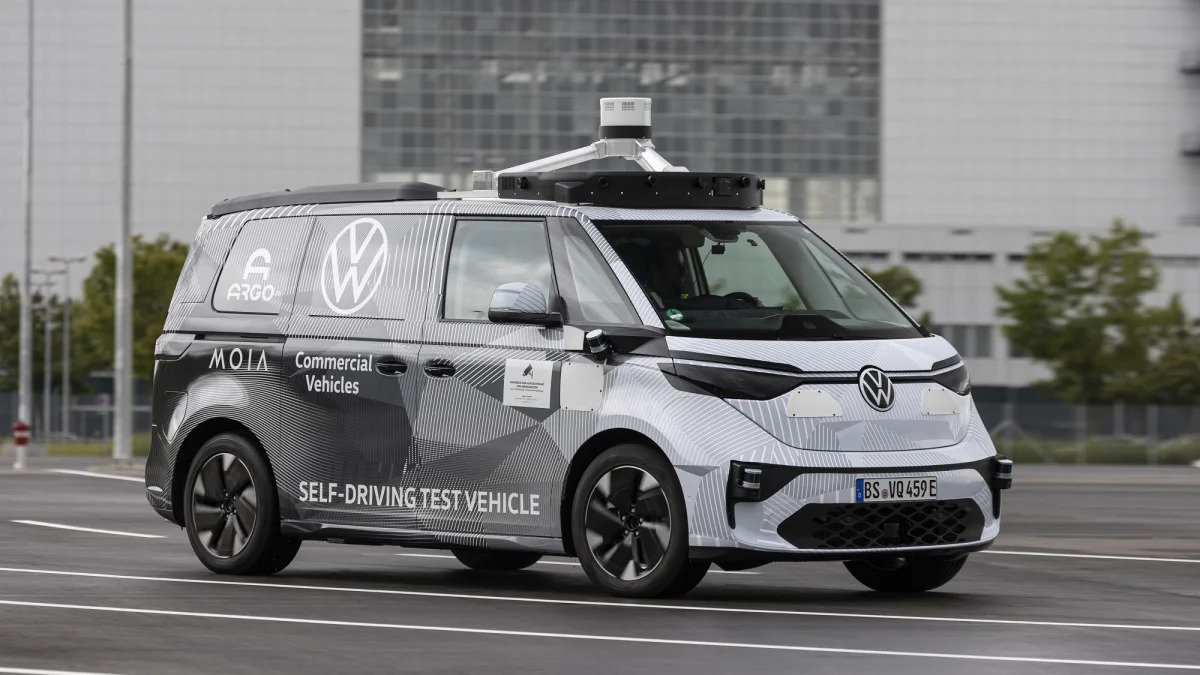Volkswagen announced it will begin testing self-driving, ID.Buzz-based electric shuttles in 2025. Powered by Argo AI, a Pittsburgh-based company the firm holds a stake in, the vans will begin carrying users in Hamburg.
Argo AI founder and CEO Bryan Salesky and Volkswagen boss Herbert Diess jointly explained the project is as clear-cut as it sounds. The car side of the equation comes from Volkswagen, while the self-driving system is provided by Argo AI. Starting with the upcoming production version of the ID.Buzz concept makes sense. It's a big van, so it offers plenty of space for people, gear, and the parts required for autonomous driving. It's also electric: It's built on the MEB platform that's found under the ID.4, among other battery-powered Volkswagen Group models.
Cameras, radars, and a lidar unit mounted on the roof panel drive the van. Salesky said his company's lidar has the ability to detect objects up to 1,300 feet away, even if they're dark (like a flat-black car). Much of the hardware is bolted to the van's body, so it'll be easy to identify it as autonomous even from a distance.
The prototype displayed in Munich gives us a hint at how the Buzz has changed in its transition from a concept to a production car. While it's draped in camouflage, we can tell its front end has been redesigned — it notably gains real headlights instead of the design study's LED units — and it inevitably grew door mirrors and exterior door handles. Changes made to the back include bigger lights, though the overall proportions haven't been significantly altered.
Volkswagen will unveil the production version of the ID.Buzz (whose name hasn't been announced yet) in 2022, and sales in the United States will start in 2023. As for the autonomous model, it will start shuttling passengers in Hamburg, Germany, in 2025, and it will go through a number of tests on roads and on test tracks until then.
Related video:










Sign in to post
Please sign in to leave a comment.
Continue